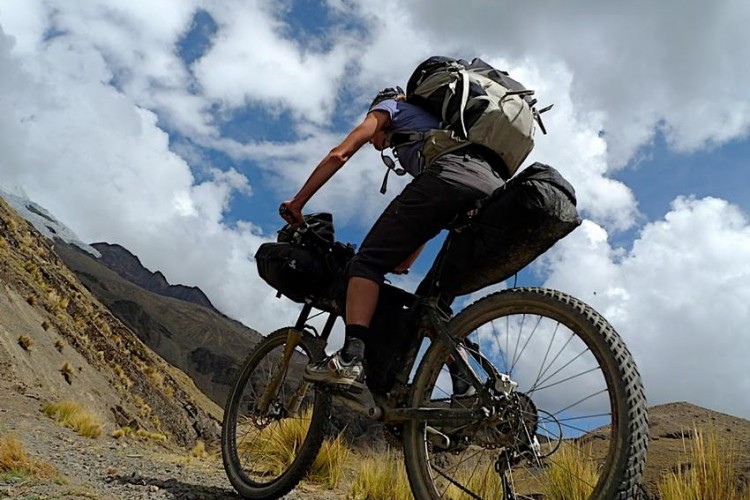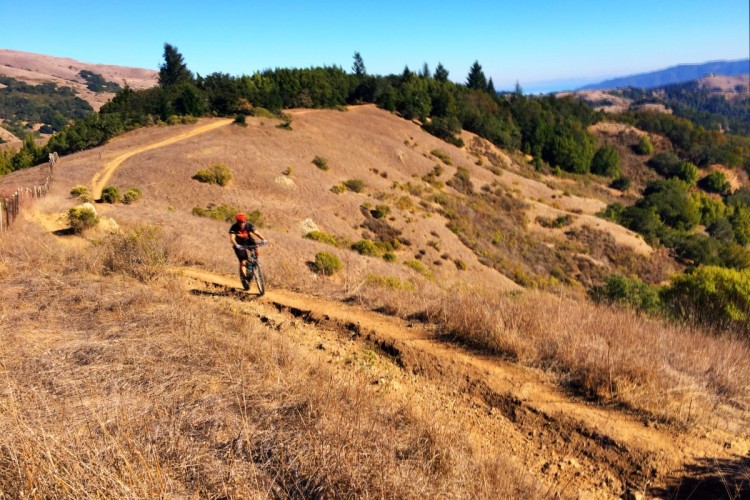
At some point, all of us will be faced with this question: “Should I upgrade the parts on my old mountain bike or just buy a whole new rig?” It’s not always an easy or clear decision, but if any of the following scenarios apply to you, it might just be time to buy a new bike.
Your bike doesn’t fit you all that well
Sometimes we end up on a bike that doesn’t fit us well because at the time of purchase, we were in between sizes and picked the wrong one. Other times, we outgrow our bikes or just get a bike that sorta fits because it’s a good deal or free from a friend. Whatever the reason, if you’re starting to itch for an upgrade but your current bike doesn’t fit you just right, you’re often better off spending coin on a new rig rather than trying to make your existing bike work.
Of course it’s possible to upgrade key components to improve the fit of any bike: everything from stems and bars to saddles, seatposts, and crank arms can be right-sized for an improved fit. But it’s rare that a single component swap will solve all your fit issues, and the costs of components can quickly add up. It’s tempting to see something like an offset seatpost as a solution, but solutions like this can introduce new issues–like reduced durability–or offer compromised performance.
You can’t find the parts you need for your bike
We’re all frustrated when new standards are introduced since the implication is that someday, it might become difficult to find the parts we need to service our bikes. Thankfully it can take many years, if not decades, before certain parts disappear altogether, but if you can’t add the new bells and whistles you want for your rig, it might just be time to get a new bike.
For example, if you have an older mountain bike, chances are it didn’t come with a dropper seatpost and the seat tube diameter is 27.2mm. These days, finding a 27.2mm dropper seatpost is extremely difficult since, by the time dropper posts came out, most bikes were already using beefier tubes.
Plus tires offer another example. While it is possible to fit plus tires in some older bike frames and forks, the tradeoff is a lower bottom bracket, limited tread patterns, and poor mud clearance. Not only that, a set of plus wheels and tires doesn’t come cheap, easily costing $750 or more just for the parts.
[see_also id=”63002″][/see_also]
If you’re lusting after the latest mountain bike tech, it’s often better to just save up for a new rig than to compromise with parts that almost, sorta fit.
Your singletrack tastes have evolved

Many of us start out with a certain style of riding, only to later get into a different discipline. So while your current rig might be well suited to the local cross-country trails, it could be holding you back from your enduro or snow biking aspirations.
This is perhaps the easiest situation to recognize, especially when we’re looking to jump between extreme mountain bike niches. No one would try to race enduro on an XC hardtail! But even attempting to make an existing bike “a little more aggressive” or “a little more snow-worthy” can be expensive, often ending with sub-par results.
For example, if you have a trail bike with 130mm of travel but really need 150mm for the fast, gnarly trails you like riding now, it might be tempting to just slap a bigger fork on the bike. Aside from the cost (forks aren’t cheap!), there’s a good chance this change will alter the bike’s geometry in a negative way. Worse, you could destroy your frame because the new geometry has altered the way forces interact with the frame.
You can’t find good parts for your bike
Dropper posts and plus tires are nice-to-haves, but once the must-haves start becoming difficult to find, it’s time to get a new bike. For example, many riders are discovering it’s now difficult to find high quality (lightweight, durable) 26-inch wheels and tires. Essentially as parts wear out, owners of these retro-rigs are forced to downgrade from previously top-of-the-line components to low-end, bottom-of-the-market parts.
If you find that with each part you replace, your bike is becoming less capable and less fun to ride, it’s time to buy a new bike.
Your frame is compromised
If you have a damaged or broken bike frame, it’s generally unwise to throw more money into the bike in the form of expensive upgrades. Sure, you can tell yourself you’ll just replace the frame when it finally gives out and transfer the newly upgraded components onto your new rig, but don’t kid yourself: not all components will work on your new rig, plus it never feels great putting even slightly worn, dirty components on a new frame.
The new parts you’re eyeing are too expensive

Don’t forget to consider the hidden costs of parts upgrades vs. buying a new bike. Generally the amount you’re looking to spend on new parts for your old rig will be less than the cost of a new bike, but there are items that can tilt the scales in favor of a new purchase:
- How much can you get for your old bike? If you figure you can sell your old bike for a few hundred dollars, add that to the cost of the parts you’re thinking of upgrading to see if you’re closer to being able to afford a new bike.
- Be realistic about the condition of the parts you’re not upgrading right away. If your chain and cassette also need to be replaced later this year, throw that cost into your calculations.
- As economists say, ignore the sunk costs. The fact that you paid $3,000 for your bike 7 years ago shouldn’t be relevant to your upgrade decision. That is, spending $500 on parts doesn’t make your 7-year-old bike worth $3,500; realistically, it’ll probably get you closer to $1,500. And if that’s all you’re getting for your investment, maybe it would be better to spend $2,000 on a bike that’s actually worth $2,000.
- When you buy a new bike, you get a big discount on the parts. If you’re buying a lot of upgrade parts at retail prices, you’ll certainly pay more than if those same parts come installed on a new bike.
Ok, so after reading this you might be saying, “That’s all well and good, but I can’t afford to buy a new bike. I only have enough scratch to upgrade a few parts on my rig right now.” This is probably true for many of us, and while we might not be able to afford a new bike now, we all have the ability to save the money we would have spent on upgrades to buy a new bike in the future. The great thing about taking this tack is you’ll end up a generation ahead of everyone who buys today! So what if you can’t afford a Boost 148 bike this year? You’ll be feeling really smart in two years when you buy a Boost 151* bike and all those 148 models are obsolete.
Your Turn: Have you purchased a new bike recently or upgraded key components on your bike? How did you make the decision, and are you still happy with that decision?
* Not to worry, this isn’t a real thing yet. 🙂





















13 Comments
Jun 15, 2019
i've almost never seen this to be the case. particularly from the likes of DB, Spec, CD, and Trek. if you can get the frames, you end up VERY discounted. as getting that new bike built costs money, setup costs money packaging Ect all adds to the end cost. but if you can repair and build... you're cheaper to DIY
assuming you go for retail, you could be looking at 15-20% cheaper if you buy and assemble it yourself.
for example. I don't like or want a Dropper post. I set the seat a bit lower but comfortable, because when I climb i'm off the seat anyways. its weight and cost I don't want/Need. building from the frame up that cost is replaced by a simple Lighter carbon post that fits me and my style better.
Finally. I pick the frame, I pick the fork, match up good rims ect ... after all of this I end up with a Bike that's EXACTLY what I want. no need of having to get rid of old parts as I got the right ones from the start.
Dec 27, 2016
Dec 27, 2016
Would be interesting to analyze bike sales to see how much top mountain bikes depreciate after 1, 2, 3 years, etc. I feel another article coming soon. :)
Dec 26, 2016
I always buy used bikes, cheaper with nicer parts and my kids use them too. Usually 8-10 yr old 26ers. If I have extra dough Id upgrade them, but you're right Jeff. Its harder to get or even find those parts.
But this holiday I broke my own rule, since I got an extra sidejob(where all my hobby funds came from), got an itch for a 27.5plus new rig.
I made sure its black though, so it'll blend with the herd and the mrs wont notice lol!
May 31, 2017
Jan 25, 2019
It felt good to me back in the day but it was two sizes too small so I always had a looong Thompson seat post and a high-rise stem to help compensate. Also, I hope to move out west where I would ride totally different terrain and maybe try DH. Not to mention, it must be nice having disk brakes, dropper posts, rear suspension, and all those other new fangled gadgets I am reading about!
I will have to make due until I actually move, so I know exactly what sort of riding I will be doing. I will also need to start saving my pennies because bike prices have shot up over the last two decades! Either way I will buy gently used as I can get the the most bang for the buck. Like new cars, let someone else suffer the initial depreciation.
Aug 20, 2017
Dec 30, 2016
Feb 18, 2018
Dec 26, 2016
Dec 26, 2016
Dec 26, 2016
Dec 27, 2016